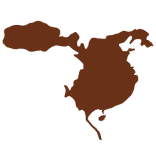About
“Mapping Western Han” is an interdisciplinary project on mobility during the Western Han dynasty (201 BCE–8 CE). It maps
historical river courses and coastlines, changing administrative boundaries, and settlements of various
sizes. It also develops tools that will enable users to chart the travel paths of individuals and groups.
Identifying patterns of mobility and their changes will help us understand the form empire took in China’s
early imperial period.
At the same time, the project also enables us to track and visualize
small-scale movement—e.g., a single trip taken by one individual within a confined geographical
region—and, in the process, gain historical insights at a micro-historical level. The project is supported
by various grants of the Social Sciences and Humanities Research Council of Canada and is conducted in
collaboration with researchers at the Max Planck Institute of the History of Science (MPIWG Berlin).




















